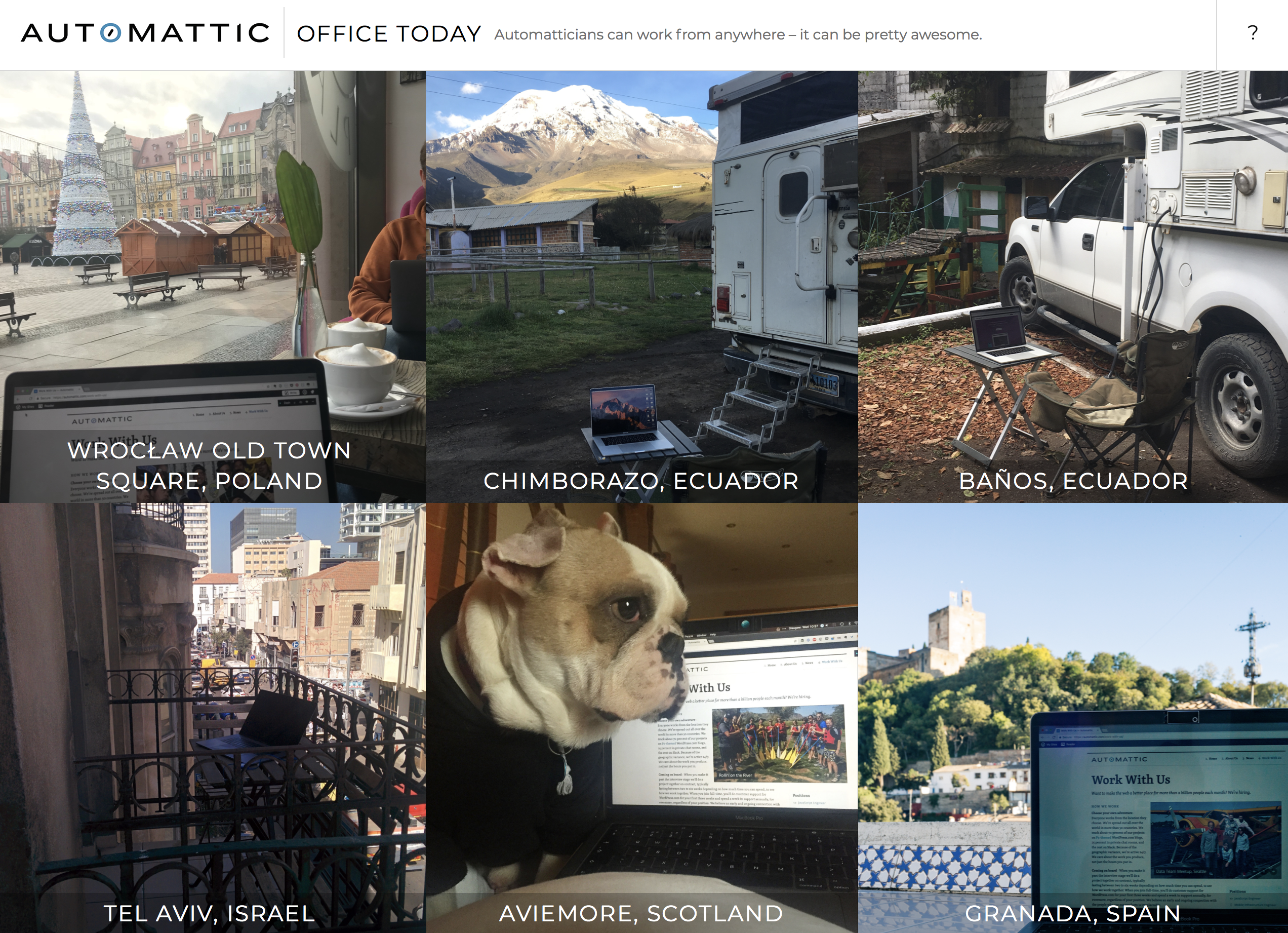In my practice as a team lead at Automattic I keep coming back to the challenge of scale. Scaling up both in scope and in size, taking on larger projects and bigger teams with more overhead and management. Going from a small team paying attention to one product all the way to a group of teams across a many channels.
One reason it’s a been a difficult challenge for me is that with the increase in scope and size, my time to give individual attention to people and projects decreases. I find myself asking, “How can I best scale up my presence to keep in touch with everyone on everything they’re doing?”
The second part of the challenge is our particular work style: Automattic is fully distributed, biased toward text communication, and most interactions are asynchronous because of time zones. Our culture is optimized for personal flexibility as we set our own work hours and schedules — and office locations change daily.

I’ve started writing down the principles that lead to my mindset for being present — plus the techniques that have worked well so far. I’m sharing them here publicly to keep myself accountable for the practice.
To scale my presence on distributed teams, I will:
- Build connections to build trust.
- Conduct pulse checks on a regular basis, including skip-level chats¹.
- Share regular updates to the group to expose my thinking, highlight important messages, and provide insight into what I’m tracking both internally and externally.
- Ask everyone to share their observations with me.
- Make coaching a priority, so others can learn to help themselves.
- Delegate more. Can someone else do it?
- Be true to my word.
- Be visible.
Your ability to have influence at a larger scale within your organization starts with knowing how to connect and influence people in your immediate team. Alyssa Burkus in How to Be More Present With your Team (Actionable.co)
But wait… these are all practices for any leader, even when located in the same building, same city. The last one — being visible — is the key to solving the difficulty of a distributed, async workforce.
Ideas that I’ve tried for improving visibility include connecting more over video, to “share a tea” virtually as we chat. Posting short personal updates on what I’m up to outside work. Jumping into short, high-fidelity check-ins over voice and video to unblock a communication gap, which is a boost to the human bond. The view into someone’s office can lead to questions like, “What’s that book on your shelf?”
Teams and individuals at Automattic socialize together via chat or photoblogs or videos or GIFs. Whether that’s around hobbies and shared interests, building cultural awareness, and following each others’ lives via social media. As my coworker Cate says, “Make it feel like a team.” Ultimately it’s about humanizing the distance.
Making it feel more human means involving myself in the connection over the distance. It’s not just a transaction — we’ve bridged the gap to interaction.
I’d love to hear from you, too. What’s worked best for you to be more present for your team?
- Footnote: the vocabulary of scaling teams is fun. Learning to scale my leadership also means picking up industry lingo around scaling teams and companies. Everything from skip-levels, business units (BU), direct reports (DR), individual contributors (IC), org chart, directly responsible individual (DRI), “manage up,” and more. Not all the buzz words are new to me, but I typically avoid using corporate-sounding vocabulary. As I seek to understand everything at scale, I find myself using these phrases and acronyms more often now with certain audiences. I’m picking it up as I go! Something new each day.


Leave a comment